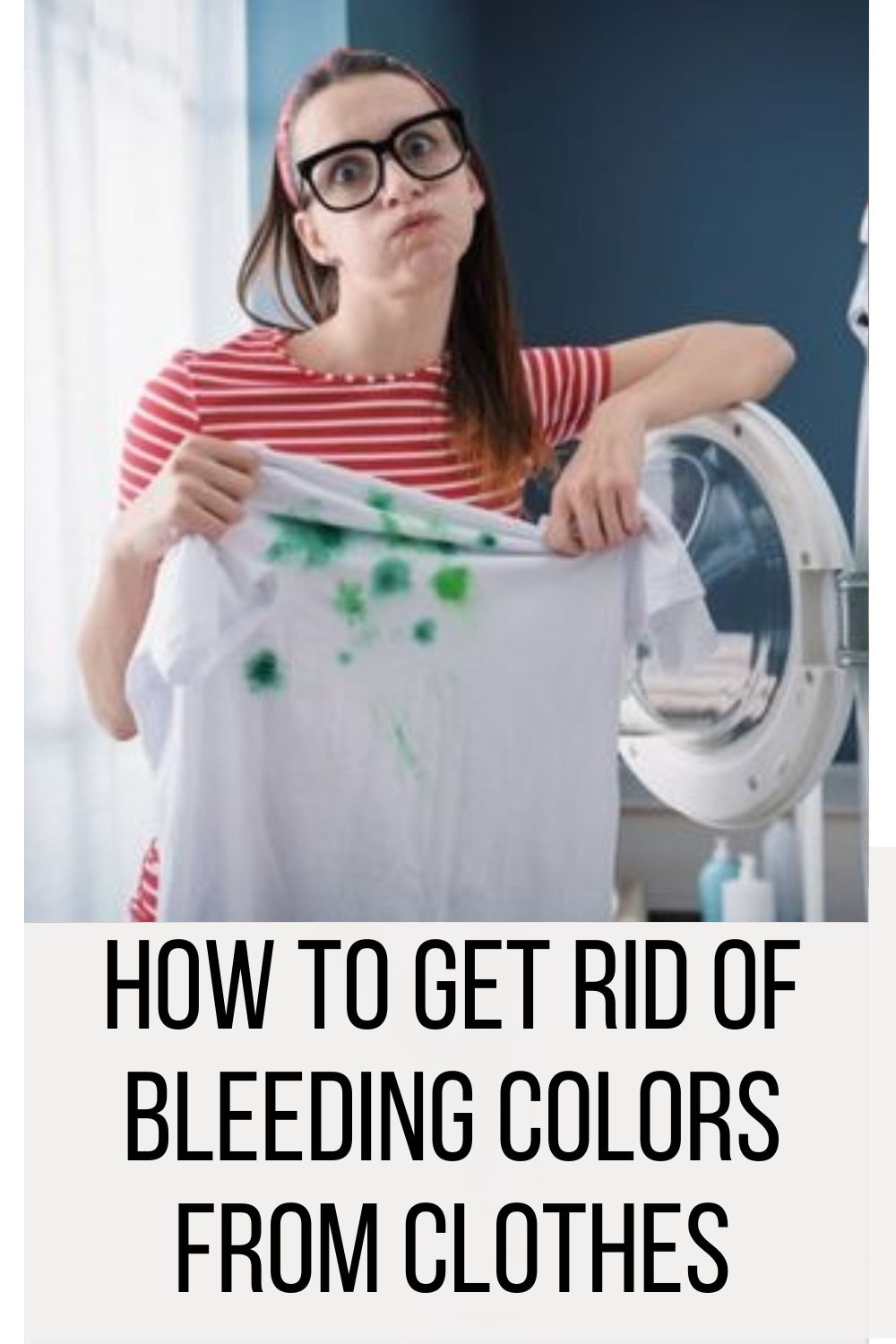
Bleeding colors can be a frustrating problem when it comes to laundry. Whether it’s a new shirt that stains the first time you wear it, or a load of whites that come out of the wash with a pink tinge, it can be difficult to know how to remove the color. In this article, we will discuss several ways to remove bleeding colors from clothes, including using common household items, specialized laundry detergents, and professional methods. Whether you’re dealing with a small stain or a large load of laundry, these tips and tricks will help you restore your clothes to their original color.
Table of Contents
What Does Color Bleeding Mean And When Does It Happen?
Color bleeding refers to when dye from one fabric transfers onto another during washing or wearing. This can happen when clothes are not washed separately according to their colors or when certain fabrics, such as new or brightly colored clothes, are not pre-washed before being worn or washed with other clothes. This can result in discoloration or staining on clothing, making them look faded or discolored.
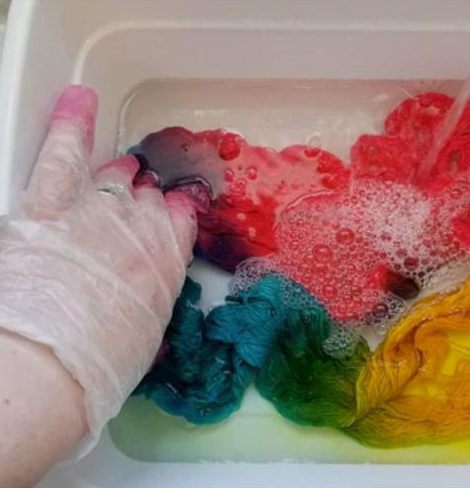
It is important to note that, color bleeding can happen not only in the washing machine but also in the dryer, due to the heat and agitation that occurs during the drying process.
Things To Avoid When Dealing With Stains From Color Bleeding
When dealing with bleeding color stains, there are a few things to avoid in order to prevent further damage to your clothes. These include:
- Do not use hot water: Hot water can set the stain and make it harder to remove. Use cold or lukewarm water instead.
- Do not use chlorine bleach: Chlorine bleach can remove the color from the fabric, making the stain even worse.
- Do not rub the stain: Rubbing the stain can cause the dye to spread, making the stain larger and harder to remove.
- Do not put clothes in the dryer: The heat from the dryer can set the stain, making it harder to remove.
- Do not use too much detergent: Using too much detergent can cause over-sudsing, which can cause the dye to spread and make the stain worse.
- Do not delay: The longer you wait to treat a stain from color bleeding, the harder it will be to remove.
It is important to address the stain as soon as possible and try different methods to remove it before it sets in.
Getting Stains From Color Bleeding Out of Clothes – 5 Simple And Efficient Methods
We’ll examine the top treatments in this section and look at the circumstances in which they work best. Some of the most efficient methods of dealing with stains from color bleeding include:
1. Baking Soda-Getting Stains From Color Bleeding Out of Clothes
Baking soda is an excellent option for removing various kinds of stains, including those caused as a result of color bleeding, because it is mildly abrasive. It helps to lift and remove stains by breaking down and lifting away the stain. Additionally, baking soda is a natural whitening agent, so it can help to brighten colors.
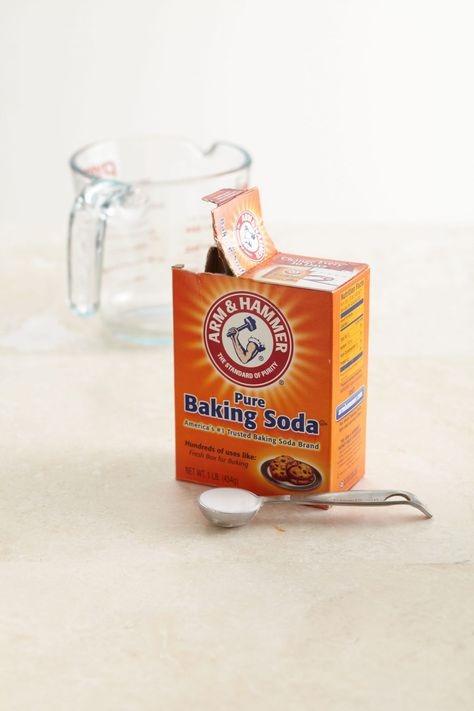
Baking soda also has a mildly alkaline pH, which can help to neutralize acid-based stains and dyes, making it effective in removing stains from color bleeding. Baking soda can be used to treat a variety of stains by making a paste with water and gently rubbing it into the stain before washing. To remove color bleeding stains from clothes using baking soda, you can use the following steps:
- Mix a paste of baking soda and warm water in a small bowl. Mix 3 parts baking soda to 1 part water and stir until it forms a thick paste.
- Apply the paste to the stain: Gently rub the paste into the stain using a soft-bristled brush or your fingers. Be sure to cover the entire stain.
- Allow the paste to sit: Leave the paste on the stain for at least 30 minutes, or up to overnight if the stain is particularly stubborn.
- Rinse the paste off: Rinse the paste off the clothing with cool water.
- Laundry as usual: Wash the clothes as you normally would, with your usual detergent.
- Check for the stain before drying: Inspect the clothes for any remaining stains before putting them in the dryer, as the heat can set the stain.
Note that baking soda works best for spot treatment rather than the whole garment. It’s important to note that before using this method, it’s always best to check the care instructions on the clothing label. Some fabrics may be more delicate and require special care. Additionally, be sure to test the baking soda solution on an inconspicuous area of the clothing first to ensure that it does not cause any damage or discoloration to the unstained parts of the fabric.
2. Rubbing Alcohol-Getting Stains From Color Bleeding Out of Clothes
Rubbing alcohol, often known as isopropyl alcohol, is a proven stain remover. It has been applied to various stains for generations. Similar to baking soda, this technique is most effective for treating specific areas rather than entire clothes.
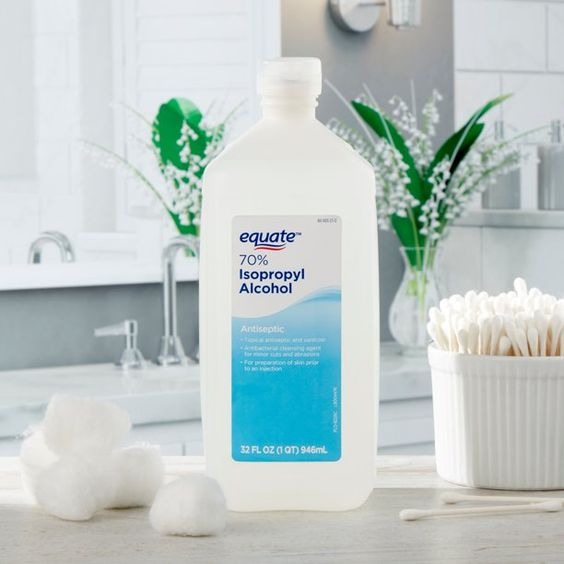
Rubbing alcohol is effective for removing color bleeding stains from clothes because of its solvent properties. It can dissolve and break down the pigments in the dye that has bled onto the fabric, which allows the stain to be lifted away from the fibers of the fabric. The alcohol also helps to lift away any dirt or grime that may be mixed in with the dye, which can further help to remove the stain. Here’s a step-by-step guide on how to use rubbing alcohol to treat stains from color bleeding:
- First, check the care label on the clothing item to ensure that it can be safely cleaned with rubbing alcohol. Some fabrics, such as silk or leather, may be damaged by rubbing alcohol.
- Next, mix a solution of equal parts water and rubbing alcohol in a spray bottle.
- Spray the solution directly onto the stained area, making sure to saturate the fabric completely.
- Use a clean white cloth or sponge to gently rub the stain, working from the outside of the stain towards the center to prevent the color from spreading.
- Once the stain has been removed, rinse the area thoroughly with water to remove any remaining rubbing alcohol.
- If the stain is still present, repeat the process until it has been completely removed.
- Finally, launder the clothing item as you normally would.
It’s important to note that this method may not work for all types of stains or colors and it’s always a good idea to test the solution on a small area of the fabric first to confirm if it is safe to use on the fabric. Also, some colors may not be removable totally but the stain may be lightened to a significant extent.
3. Commercial Stain Removers-Getting Stains From Color Bleeding Out of Clothes
Commercial stain removers typically use a combination of enzymes, surfactants, and bleaching agents to remove color bleeding stains from clothes. Enzymes, such as proteases and amylases, break down protein-based and starch-based stains, respectively. Surfactants, such as sodium lauryl sulfate, help to emulsify and lift the stain from the fabric. Bleaching agents, such as sodium percarbonate, work by breaking down the color pigments in the stain and returning the fabric to its original color.
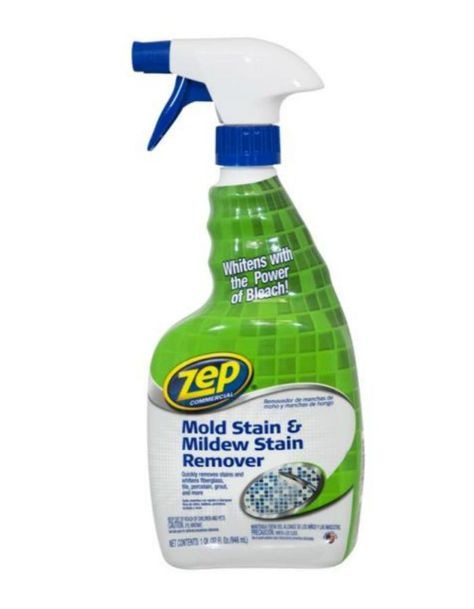
Because of its efficiency and extensiveness, this method is preferably used to treat the whole stained garment, instead of spot treatment of the color bleeding stains. The specific instructions for using a commercial stain remover to remove color bleeding stains from clothes may vary depending on the product, but in general, the process involves the following steps:
- Test the stain remover on a small, inconspicuous area of the fabric before using it on the entire stain.
- Follow the instructions on the product label for the recommended amount of stain remover to use and the appropriate contact time.
- Apply the stain remover directly to the stain, making sure to saturate the entire area.
- Allow the stain remover to sit on the stain for the recommended amount of time. Some products may require you to agitate the fabric or use a brush to work the stain remover into the fabric.
- Launder the garment, as usual, using water at the safest temperature recommended on the care label and the detergent you typically use.
- Inspect the stain before drying the clothes, if the stain is still visible repeat the process or consider using another method.
It’s always a good idea to check the label and follow the instructions for the best results and also consider the type of fabric, as some fabrics may be sensitive to certain types of stain removers.
4. Hydrogen Peroxide-Getting Stains From Color Bleeding Out of Clothes
This is yet another excellent option you should consider when trying to remove color bleeding stains from clothes. Hydrogen peroxide is an excellent stain remover for color bleeding stains on clothes because it is a powerful oxidizing agent. This means it can break down and remove the color pigments that have transferred from one garment to another, effectively lifting the stain.
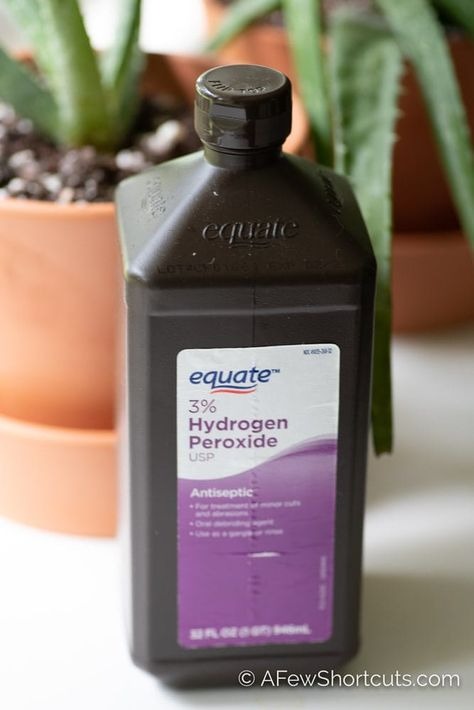
Additionally, hydrogen peroxide is a safe and natural alternative to harsher chemical stain removers, and you can use it on a variety of fabrics without causing damage. Here are the general steps you should follow when removing color bleeding stains from clothes using hydrogen peroxide:
- Mix equal parts of hydrogen peroxide and cold water in a spray bottle. Be sure to use a 3% hydrogen peroxide solution which is available in most drug stores.
- Using a dropper, apply the solution directly onto the stain and allow it to sit for a few minutes. The hydrogen peroxide will start to break down the color pigments, making it easier to remove the stain.
- Gently rub the area with a clean, white cloth or a soft-bristled brush to work the solution into the stain. Be sure to use a white cloth or brush as colored materials may transfer dye onto the fabric.
- Rinse the garment in cold water, and then launder as usual. Check the care label before washing, some garments may require dry cleaning.
- Check the garment before drying, if the stain is still visible, repeat the process.
It’s important to note that hydrogen peroxide should not be used on silk, wool, or other fabrics that can be damaged by an oxidizing agent. Also, like most other stain-removing solutions, always test the hydrogen peroxide solution on a small hidden part of the garment first to ensure that the fabric can tolerate the solution without damage.
5. Oxygen Bleach-Getting Stains From Color Bleeding Out of Clothes
Oxygen bleach is a good option for treating color bleeding stains because it is a gentle, yet effective cleaning agent. It works by releasing oxygen ions, which break down and remove the stain molecules without affecting the color or integrity of the fabric. Additionally, oxygen bleach is safe for use on most fabrics and does not cause discoloration or fading, making it ideal for treating color bleeding stains on colored or delicate fabrics.
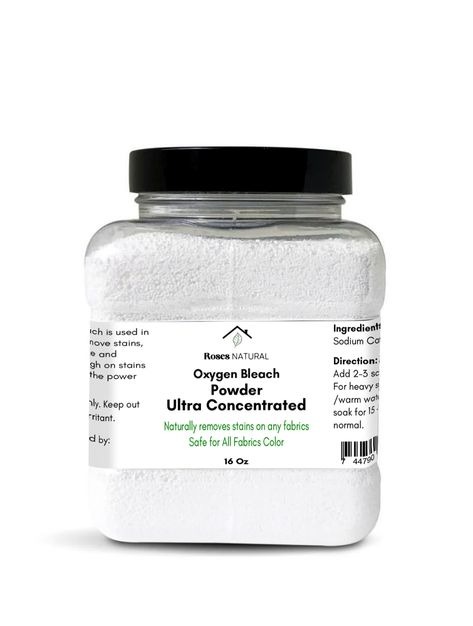
To use oxygen bleach to remove color bleeding stains, here are the steps you should follow:
- Mix the oxygen bleach powder or liquid with water according to the manufacturer’s instructions, typically 1/4 to 1/2 cup of oxygen bleach per gallon of water.
- Soak the stained clothing or fabric in the solution for at least 30 minutes, but no longer than 6 hours.
- Agitate the fabric gently to loosen the stain, and then let it soak for another 30 minutes.
- Rinse the fabric thoroughly with water to remove any remaining oxygen bleach and stains.
- Inspect the fabric for any remaining stains. If necessary, repeat the process.
- Wash the fabric in the washing machine or by hand, using regular detergent and water at the safest temperature for the fabric.
- Hang or lay flat to dry.
It’s important to note that not all fabrics are suitable for oxygen bleach treatment and before using it, you should check the care label on the garment.
Conclusion
Color bleeding stains can be a frustrating problem to deal with, but with the right methods and products, they can be removed successfully. The key is to act quickly and to use the appropriate treatment for the type of fabric and stain. Whether you choose to pre-treat the stain, use a laundry detergent specifically formulated for color bleeding, or try a homemade remedy, it’s important to be patient and persistent in your efforts. With a little bit of know-how and elbow grease, you can restore your clothes to their former glory and enjoy wearing them once again.